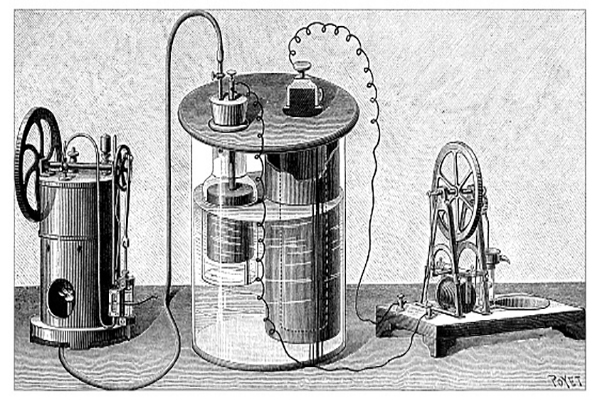

By Allison Proffitt, Editorial Director, AI Trends
Thanks to the cost reductions that have come from global electric vehicle adoption, lithium ion batteries now have an important role to play in grid storage, Susan Babinec, Argonne National Laboratory, told audiences last week at the International Battery Virtual Seminar and Exhibit. But making full use of them is going to require a bit of help from artificial intelligence.
While EVs prize high energy density, and only need to last about eight years, grid applications require more cycles, more calendar life—20 to 30 years—and more safety at a lower cost.
“Grid economics requires precise life data, which is very time and resource intensive to generate,” Babinec said. “We are using approximations that create risk, limit our design creativity, and increase cost.” The solution? Of course, in today’s day and age the solution is always artificial intelligence, Babinec quipped. “In this case, we’re going to use AI to massively reduced time to cycle life prediction.”

Babinec’s team categorized the variables impacting lithium ion batteries for grid applications—acknowledging that adjusting any one variable will always mean changes in others. “For grid storage, first and foremost, low cost is always the most important,” Babinec said. But others include state-of-charge swing, C-rate, average state-of-charge, and temperature.
“Today we handle this variability by estimating the cycle life, but those estimates do not really allow us to push these cells to the limits of what they can really do,” Babinec said. “We just simply don’t have enough information on the cycle life and we are limited by the information that is provided by the cell manufacturer, which is really all about them making sure they can live up to their warranty.”
Babinec is prioritizing overall cost per cycle (levelized cost of storage, LCOS). This is a better metric than capital cost because grid storage batteries are durable goods, she explained. The Department of Energy’s target for LCOS is $ 0.02/kWh, a target for which we currently fall far short.
“No matter how you look at it, we are not there today with any combination of capital and cycles,” Babinec said. “We need to bring the capital down, but right here and now we need to bring the number of cycles up.”
Looking to AI to Decrease Testing Time from Two Years to Two Weeks
Argonne is applying artificial intelligence to the problem. Babinec’s group is developing rapid cycle life evaluations using AI to decrease testing from the current two years to a goal of two weeks. Argonne is the right spot for this research, Babinec argues. As the DOE’s battery hub, Argonne has plenty of data, a team of AI experts, and a new supercomputer up to the task. Aurora, created in partnership with Argonne, Cray and the DOE, will be the first exascale computer in the U.S.
The scope of the project is broad. They are using several AI approaches—from physics-based tools to deep neural nets. “We want to see which AI approach is the best for this problem,” Babinec said. All of the Li-ion chemistries will be tested deliberately and sequentially, and the current, voltage, and time will be recorded for every second, of every cycle, for every cell.
Babinec describes the basic AI process as encoding data from one cell running one cycle. Each cell cycle generates 150 features. Narrowing in on one feature from many cells, you determine correlations and relationships and decode for one behavior: cycles to failure.
To test their plan, the group used public data published last year in Nature Energy (DOI: 10.1038/s41560-019-0356-8). They compared the capacity at a certain voltage in cycle one to the capacity at the same voltage in cycle 20 and generated correlations and relationships then predictions from there. The results: the experimental cycles to failure and the predicted cycles to failure aligned.
Her presentation at Florida Battery was the first presentation of Argonne’s experimental results, and Babinec shared that the approach seems to be working. When testing many chemistries, like cells self-organize by chemistry and cycles to failure. When run on real cells, predictions match observed. So far, Babinec says it looks like it will take as few as 40-60 cycles to predict cycle life—more for high cycle life, less for low cycle life.
The key to a high-quality prediction, she emphasized, is using training data from cells with a cycle life that is similar to your goal cycle life. For example, cells that failed at 150 cycles will not accurately train an algorithm to predict 2,000 cycles.
While work on the cycle life predictions continues, Babinec says Argonne is also focused on cleaning up more than 20 years’ worth of spreadsheets, databases, and machine files containing battery data. “The data is wonderful, but it has to be cleaned up. It’s a major effort, which we are working on,” she said. The team is working toward machine learning-ready training data including, for example, capacity vs. cycle comparisons and discharge curves. Some data are available on Github: https://github.com/materials-data-facility/battery-data-toolkit
“There is promise for this,” Babinec said. Testing timelines will decrease, which she says may open up assessments of complex and changing use scenarios, eventually enhancing deployment flexibility while minimizing risk.
Learn more at Nature Energy (DOI: 10.1038/s41560-019-0356-8).
Let’s block ads! (Why?)
Read more here: AI Trends






